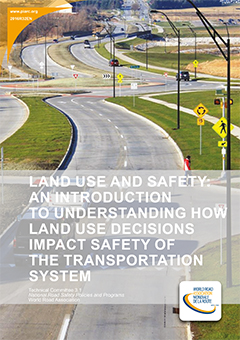Land use and safety: an introduction to understanding how land use decisions impact safety of the transportation system

Unplanned communities create hazards for road users of all types generating unsafe conditions for motorists on the roadway and significant dangers for pedestrians, bicyclists and residents alongside or adjacent to the road. While the World Road Association continues to investigate options and recommendations for communities that already exist in these environments, Technical Committee 3.1 generates this report to explain the relationship between land use and transport planning and the need for determined, thoughtful planning processes to prevent unsafe road conditions from developing. This report is not a design guide, but rather an attempt to inform the reader about the impact of fundamental land use and transportation decisions on the character and safe operations of the transportation system. Information in this report comes from contributions of the Technical Committee members and a literature review of international land use and transport planning research.
This report provides an introduction to land use planning concepts for non-experts and reviews the impacts that fundamental land use decisions (density, use, mix) and fundamental transportation decisions (functional classification of roads, transit availability, speed, access) can have on safety outcomes.
It begins with a discussion of the three main highway functional classifications - arterial, collector, and local roads - and the relationship between functional classification and land access. Arterials provide a high level of mobility and a greater degree of access control, while local facilities provide a high level of access to adjacent properties but a low level of mobility. Collector roadways provide a balance between mobility and land access.
This report also provides examples of where and how land use and transportation decisions are made in various government structures since the decision-making authority can vary in different countries. Lastly, it briefly explores several tools and techniques to improve safety in transportation and land use interactions.
Information sheet
- Date: 2017
- Author(s): Comité technique 3.1 Politiques et programmes nationaux de sécurité routière Technical Committee 3.1 National Road Safety Policies and Programs
- Domain(s): Road Safety
- Type: 2016R32EN - Technical Committee
- PIARC Ref.: 2016R32EN
- ISBN: 978-2-84060-440-2
- Number of pages: 44